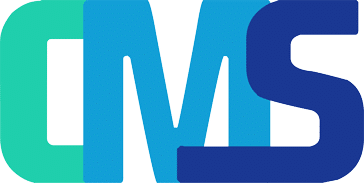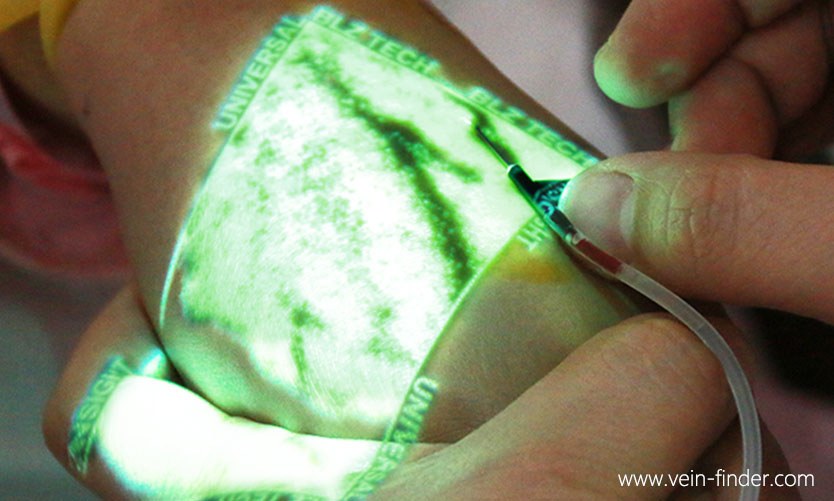
How Does Vein Finder Work?
Have you ever wonder that how does vein finder works and what’s the device for? it’s not that complex.
First of all, let me introduce vein finder to all of you in a short term.
Vein finder is a kind of medical device based on the principle of the different light absorption rate between blood and surrounding tissue.
So it can show veins in real time so the medical staff as nurses and doctors can locate the vein and do all kinds of procedure more efficiently and more easily. Let’s look into what that means and some basic things you need to know.
1.What is Vein Finder and how does a vein finder work?
So how exactly does vein finder works? not all kinds of these device use the same technology, but the fundamental principle are pretty much the same.
The fundamental principle of the device is that the Hemoglobin in blood has different light absorption rate than the surrounding tissue . So the device use this difference to identify the veins.Projected near-infrared(NIR) light is absorbed by blood and reflected by surrounding tissue.
This is not complex at all, here is a picture that may help you understand.

In this picture, we can see that the hemoglobin in the blood absorbs most of the light, so there is a reduced amount of light reflection from the veins.

For the surrounding tissue, we can see in this picture, the surrounding tissue does not absorb the light that much. Instead of absorbing, the surrounding tissue reflect the light right back.
Then the information is captured, processed and projected digitally in real time directly onto the surface of the skin. It provides a real time accurate image of the patient’s blood pattern.
What is Vein Visualization?
Vein visualization is an innovative technology that assists healthcare professionals with finding the best veins for IV starts and blood draws. Also known as vein mapping, this technology creates a real-time visual “map” of the veins on the surface of the skin.
Contact Us
Vein Finder VF30
VF30 can digitally displays a map of the veins on the surface of the skin in real time, aiding healthcare professionals to verify vein patency and avoid valves or bifurcations.Vein viewer is a proven modality that can improve patient care and save valuable time for both clinicians and patients.
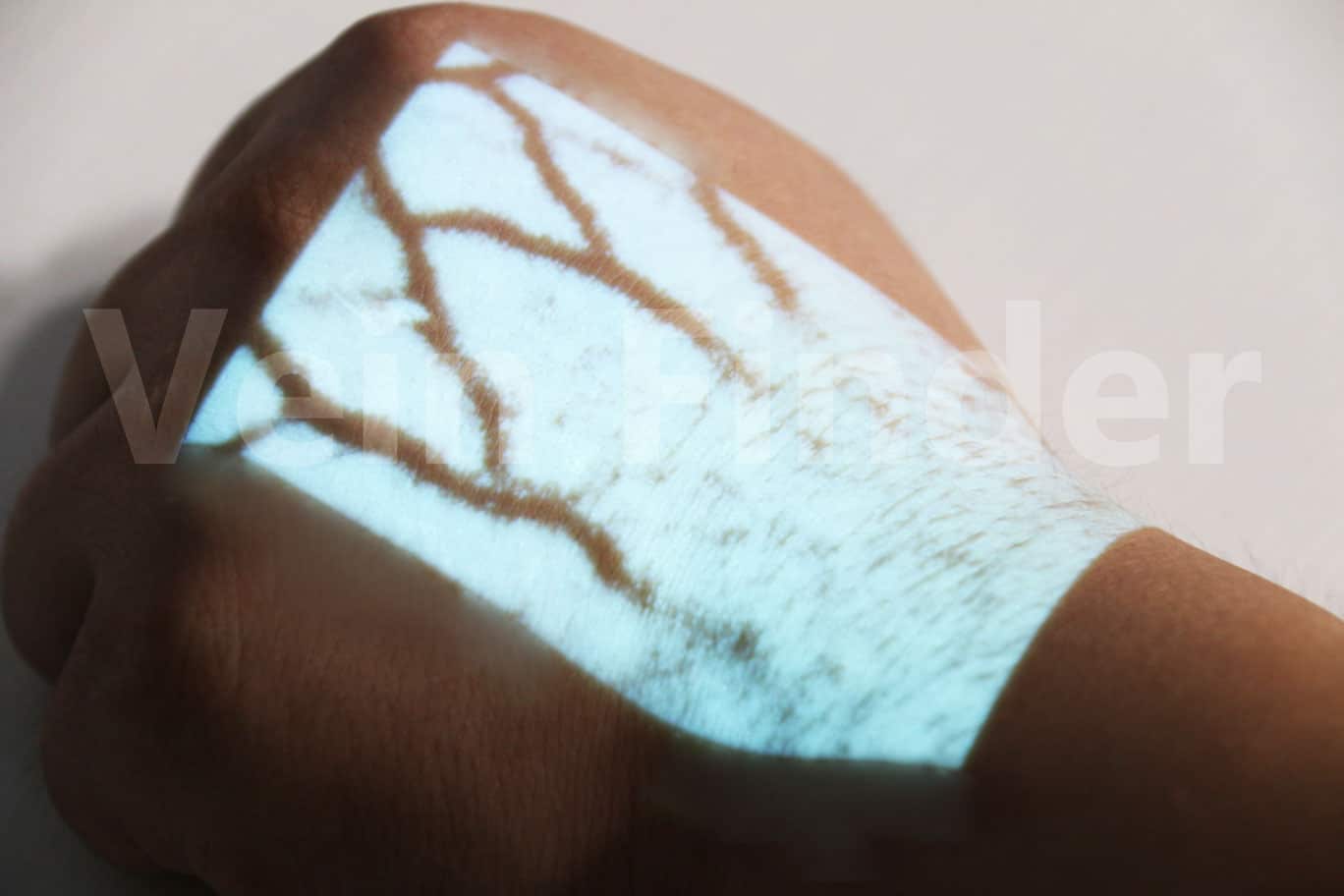
2. What Can Vein Finders Do? Anywhere do venipuncture.
As we have already known, vein finder can help our medical staff locate the vein, so what’s the benefit come out of that? quite a lot actually. As long as there is a venipuncture going on, vein finder can help.
1) IV Access
This is the number one application of vein finder. Establishing intravenous (IV) access is one of the most important skill that presents challenges for many medical professionals. This causes some unnecessary pain for the patients as well, we all have been through the fear that the nurse inject the needle but there is no blood reflux so we have to do it again.
And for patients with difficult venous access. Patients who are elderly, obese, dark-skinned, hypovolemic, have a history of IV drug use, or have chronic illness present unique problems to finding an appropriate vein to do venipuncture.
2) Blood Draw Procedure
Though there is no substitute for a trained practitioner’s experience, but the vein finder can help simplify the task of locating the point of needle placement.
Since the principle of the vein visualization will not be limited by different body parts, so it can be used for blood draw procedure, and it works well for the median cubital vein since it’s an extremely large vessel.
For median cubital vein, vein finder can always clearly show them. Vein finder can help especially for those who do not have much experience.
Here is a GIF of the Blood Draw Procedure
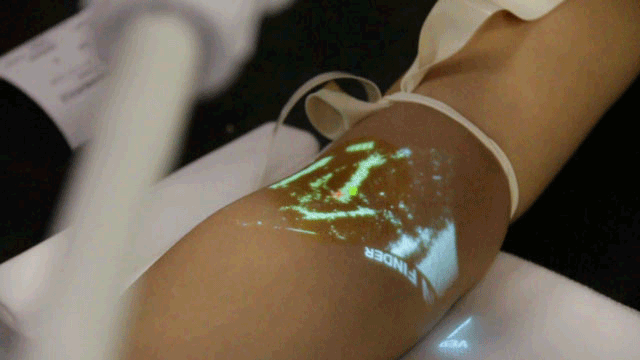
3) Cosmetic Procedures
One of the special use of vein finder is the cosmetic procedures, some people may don’t know that when you do the cosmetic procedures like injecting fillers, especially in the tear trough nasolabial folds and lips, the doctors must avoid the veins, once you accidentally inject the filler into the veins, not just the your face will be ruined, so as your life and the doctor’s career.
This is maybe the most serious side effect of located the vein wrongly, here’s a picture.
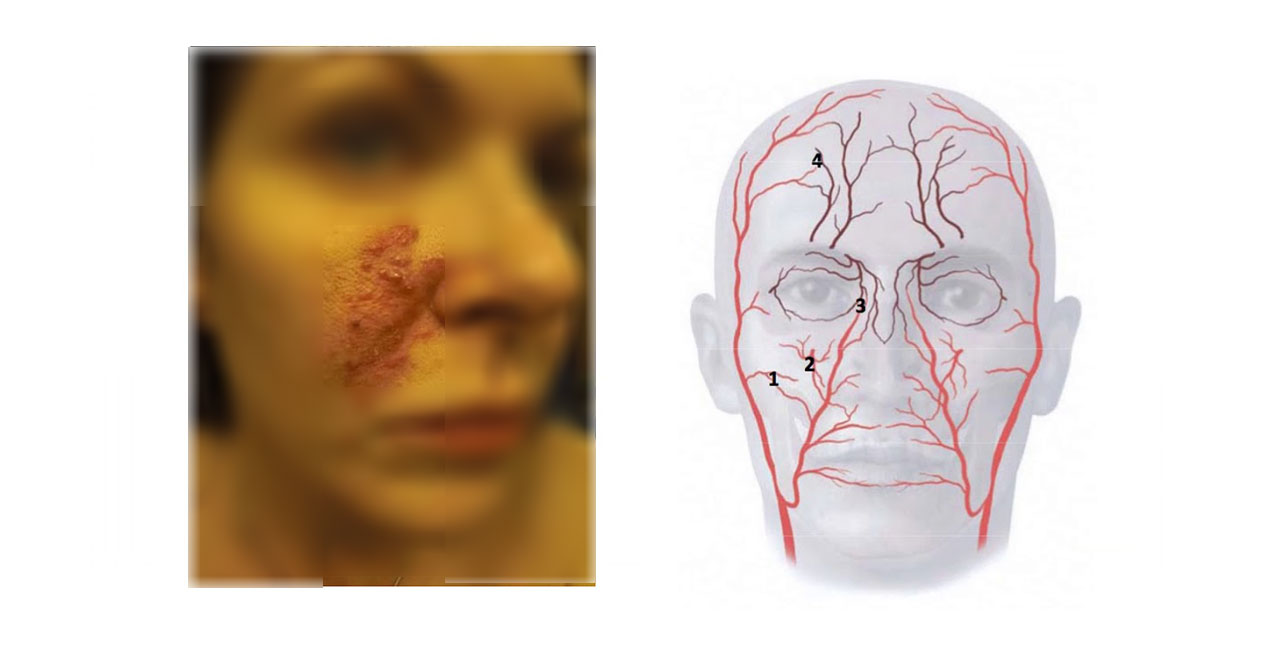
4) Many others Application.
There are many other application of vein finder, like Infusion center, Vascular Procedures and so on…
Here is a Article investigated the patient characteristic factors that correlate with identification of i.v. cannulation sites with normal eyesight. We evaluated a new infrared vein finding (VF) technology device in identifying i.v. cannulation sites.
3.There are so many kinds of vein finder in the market.
Basically, there are three main kinds of vein finder in the market,
- Infrared light Projected Vein Finder
- Infrared light Screen Display Vein Finder
- LED Transmitting Vein Finder
We will go though these vein finders one by one.
1)Infrared light Projected Vein Finder
Infrared light Projected Vein Finder is now the most popular kind of vein finder, it’s mostly light-weight and handy. But what makes Infrared light Projected Vein Finder so popular is that the device can project the vein images right on the surface of patient’s skin. It’s very convenient in the daily use. And most of them come with a support/stand, so it won’t need another person to hold the device, it can be fixed on a desk for everyday use.
Like VF Vein Finder, VeinSight, Accuvein, Veinviewer.
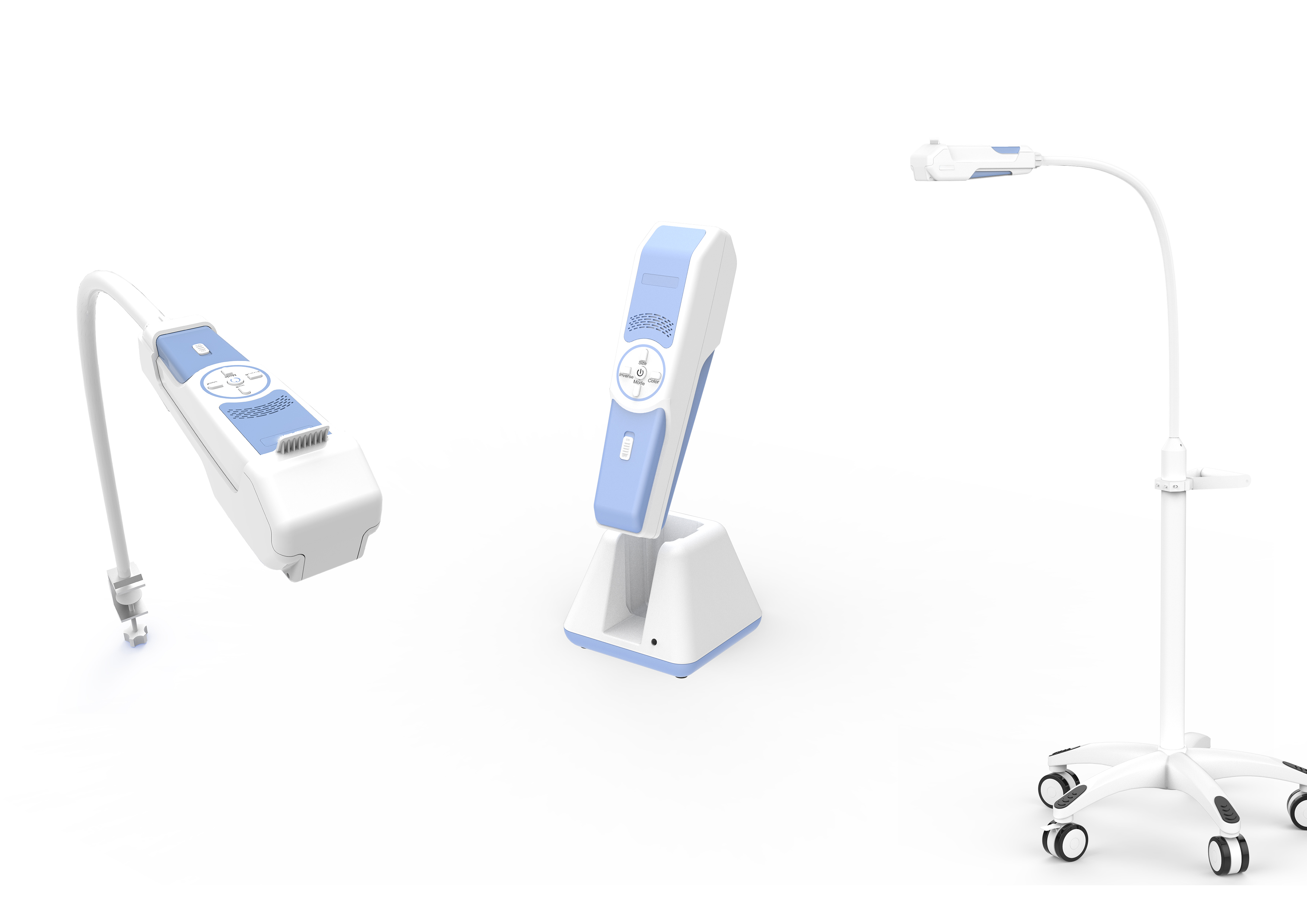
2)Infrared light Screen Display Vein Finder
Infrared light Screen Display Vein Finder means when the device have capture the images of the veins, it shows the images on a screen. the device always come with a probe and a screen.
3)LED Transmitting Vein Finder
This kind of vein finder also called Portable Vein Finders is always come in a small size. It use a lot of bright light, Placing gentle pressure on the illuminator stretches the skin and engorges the vein for easier needle insertion.
This device are mostly used in hand since it’s small. and we can not have a complete view.
